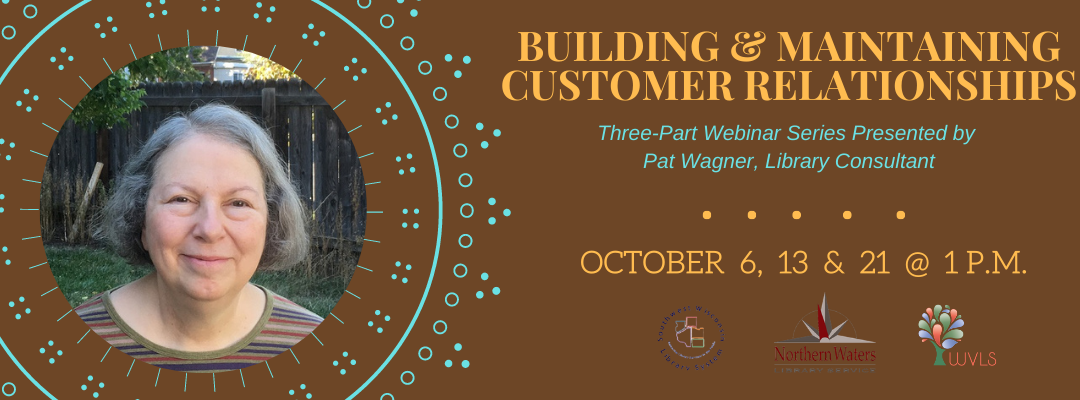Wisconsin Valley Library Service, Northern Waters Library Service, and the Southwest Wisconsin Library System are excited to announce an October Webinar Series called “Building & Maintaining Customer Relationships.” This series will help promote the value of your library through marketing, effective management and successful advocacy. The presenter for all three webinars is Library Consultant Pat Wagner. The webinars will be recorded and they are worth 1 contact hour for library certification.
Advocacy: Promoting the Value of Your Library
Wednesday, October 21; 1 p.m.
Register
Many advocacy campaigns for libraries fail because library lovers forget that not everyone has an unquestioned love of libraries. Saying someone should use and support libraries “just because” is not enough. Are community members interested in economic development or educational achievement? Are they worried about making ends meet on a tight budget, remodeling a home, finding a job, surviving as a single parent?
Library Engagement: What Your Community Needs and How to Respond
Tuesday, Oct. 13; 1 p.m.
Register
What your community needs and what your library can do to address those needs can be analyzed many ways. Do you start by talking about your current services and programming, and what materials to add to your collection? Should you focus on interviewing the leaders who run agencies to help particular neighborhoods and underserved populations? What if the people who might need your library’s help are different from the staff members of the library? How will you know what they need if they aren’t coming to the library?
Introduction to Marketing: It’s More Than Emails, Newsletters, and Social Media
Tuesday, Oct. 6; 1 p.m.
Register
The word “marketing” refers to a three-step process: listening, responding, and communicating. It starts with listening: the ongoing conversations you have with your library’s customers and stakeholders, from chats at the circulation desk to community-wide surveys, from focus groups to analyzing usage figures. Then, it’s about the changes the library makes in response to feedback and new information, impacting decisions about staffing, collections, services, and programming. Finally, it’s communicating the benefits of the library to current, former, and future customers, as well as decision makers and supporters.
Please send questions to Jamie Matczak at .

